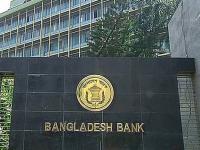Budget deficit crosses 5pc for first time in 11 years
Similar trend may continue this fiscal

Budget deficit went past the sensible limit of 5 per cent last fiscal year, for the first time in 11 years, largely because of lower-than-expected revenue collection, official figures showed yesterday.
The deficit, a situation when spending exceeds revenue, was 5.18 per cent in 2018-19, 4.05 per cent a year ago, according to the data released by the finance division.
The last time the fiscal deficit went past 5 per cent was in 2007-08 when it stood at 5.8 per cent.
For developing countries, a budget deficit is not unusual as the government needs to spend big on building infrastructure to shore up future economic activities. The government meets the gap between income and expenditure through domestic and foreign borrowing obtained as loans or grants.
But keeping the deficit within 5 per cent is recommended, and is in fact considered international best practice.
In Bangladesh, when the budget is drafted, a 5 per cent deficit is projected. The actual deficit turns out to be about 4 per cent every year as the ministries and divisions fail to use up their allocated funds.
But it was different in FY19, as shortfall in revenue generation pushed the budget deficit up.
The revised budget aimed to generate Tk 316,612 crore in revenues in the last fiscal year, but the government managed to earn Tk 251,873 crore at the end, down 20.44 per cent.
Collection by the National Board of Revenue (NBR) was Tk 218,610 crore against the target of Tk 280,000 crore.
Although the spending was down 13 per cent to Tk 384,624 crore against the planned Tk 442,541 crore, it was enough for the budget deficit to overshoot the target, according to a finance ministry report.
Low-cost foreign borrowing to bankroll the deficit financing declined compared to the target, while borrowing from the costly domestic sources went up. The government had aimed to borrow Tk 43,396 crore from external sources in FY19, but it stood at Tk 26,685 crore in the end. Domestic borrowing was up 5.5 per cent at Tk 99,893 crore.
Finance Minister AHM Mustafa Kamal presented the budget implementation report of the first quarter of FY20 in parliament yesterday. The report also contains the actual figures of budget implementation of FY19.
Similar rates of the budget deficit may continue into the current fiscal year owing to lower revenue collection, as indicators showed.
The budget was already Tk 4,066 crore in deficit in the July-September quarter, whereas it was Tk 8,187 crore in surplus during the same period a year ago.
Similarly, overall revenue collection was down 7.5 per cent year-on-year to Tk 55,493 crore whereas it was growing at 16 per cent in the first quarter of FY19.
Revenue generation by the NBR rose only by 0.8 per cent in the first quarter of FY20 against 13 per cent in FY19. Non-tax revenue fell by 45 per cent against a staggering 52 per cent growth in the first quarter last fiscal year.
According to the budget analysis, bank borrowing stood at Tk 27,950 crore in the first quarter against the full-year target of Tk 47,363 crore. This is a reversal from the trend witnessed in the same period a year ago, when the government did not borrow any money in the same quarter, rather it repaid Tk 362 crore.
The government didn’t borrow any money from non-bank sources in the first quarter. Rather, it paid back Tk 23,248 crore. Its full-year borrowing target is Tk 29,999 crore.
Between July and September, the government’s spending rose 15.03 per cent to Tk 59,560 crore. Revenue expenditure was up 9.08 per cent to Tk 46,083 crore and development expenditure climbed 41.41 per cent to Tk 13,476 crore.
The budget size for the current fiscal year is Tk 523,191 crore.









